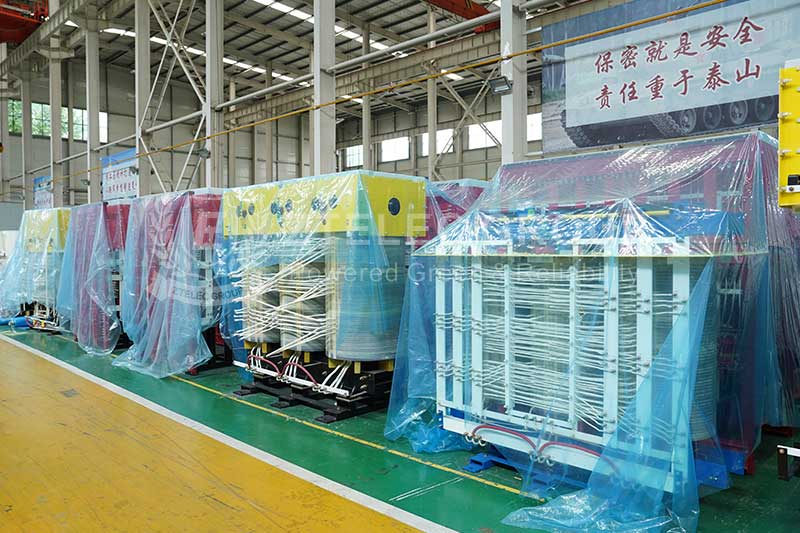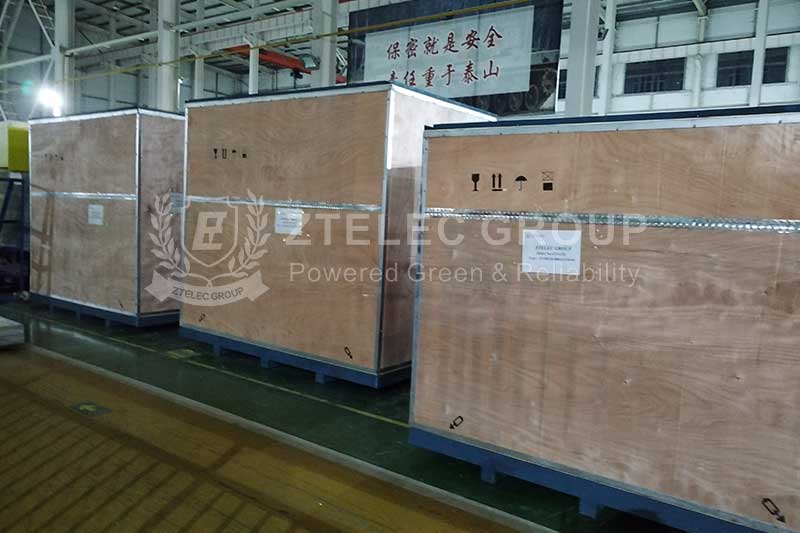Preparations Before the Installation of Dry-type Transformers
Dry-type transformers are essential components in modern power systems, and the quality of their installation directly affects the safe and stable operation of the entire power system. Therefore, it is crucial to make adequate preparations before installation to ensure a smooth process.
Firstly, the installation personnel should carefully read the product manual and relevant technical documents to fully understand the structural characteristics, technical parameters, and installation requirements of the transformer. Different models of dry-type transformers may have different installation specifications, and it is imperative to strictly follow the guidelines provided by the manufacturer.
Secondly, the installation environment should be inspected and assessed. Dry-type transformers should be installed in an indoor environment with good ventilation, dryness, and cleanliness. The ambient temperature should be maintained between -5℃ and +40℃, with a relative humidity not exceeding 90% at 25℃. The installation site should avoid corrosive gases, conductive dust, and severe vibrations.
Thirdly, the foundation of the transformer should be checked to ensure it meets the requirements. The foundation should be level and sturdy, capable of supporting the weight of the transformer and the mechanical stresses during operation. Typically, the foundation height should not be less than 300mm and should be equipped with drainage facilities. The location and dimensions of the embedded parts in the foundation must match the base of the transformer.
Lastly, necessary installation tools and equipment, such as lifting machinery, levels, torque wrenches, and insulation testers, should be prepared. All tools must be in good condition and meet safety standards.

Key Precautions During the Installation Process of Dry-type Transformers
During the actual installation process, the following key aspects require special attention:
1. Lifting and Handling Precautions:
- When lifting a dry-type transformer, dedicated lifting rings should be used. It is strictly prohibited to use the coils or other components as load-bearing points.
- The lifting process should be kept steady to avoid collisions and severe vibrations. The inclination angle of the transformer should generally not exceed 15° to prevent displacement of the internal structure.
2. Adjustment of Installation Position:
- After the transformer is in place, a level should be used to check its horizontality. The horizontal deviation should typically not exceed 1/1000. Adjustments can be made using shims under the base to ensure even load distribution among all support points.
- When fixing to embedded parts, bolts should be tightened evenly to avoid excessive local stress.
3. Electrical Connection Requirements:
- Busbar Connection: Before connecting busbars, check if the contact surfaces are clean and flat. If necessary, perform grinding treatment. The connecting bolts must be tightened to the specified torque value and anti-loosening measures should be applied.
- Cable Connection: The cable terminal heads should be made in accordance with specifications, with clear and correct phase sequence markings. The cable bending radius should not be less than the specified value to avoid mechanical stress damage to the insulation.
- Grounding Connection: The transformer core and enclosure must be reliably grounded. The cross-sectional area of the grounding wire should meet design requirements, and the connection points should be free of paint or oxidation layers to ensure good contact.
4. Cooling System Installation:
- For dry-type transformers with forced air cooling systems, check if the fan installation direction is correct and if the wiring complies with phase sequence requirements. The fan control system should be able to automatically start and stop based on temperature, and there should be no abnormal vibrations or noises during operation.
5. Protection Device Installation:
- Protection devices such as temperature controllers and gas relays (if any) should be correctly installed and set according to the instructions. The installation location of the temperature sensors should accurately reflect the winding temperature, and the connecting wires should have sufficient slack.

Inspection and Testing After Installation
After installation, a comprehensive inspection and testing must be carried out to ensure that the transformer is ready for operation:
1. Visual Inspection:
- Check if all fasteners are secure, if there is any damage to the insulating parts, and if the winding surfaces are clean and free of debris. Remove any tools, materials, or other foreign objects that may have been left inside the transformer.
2. Insulation Testing:
- Use a 2500V megohmmeter to measure the insulation resistance between the windings and the ground, as well as between the windings. The value should generally not be less than 70% of the factory value (adjusted to the same temperature). The absorption ratio (R60"/R15") should be no less than 1.3.
3. DC Resistance Test of Windings:
- Measure the DC resistance of each phase winding. The difference between phases should not exceed 2% of the average value, and the difference between lines should not exceed 1% of the average value. There should be no significant changes compared to the factory data.
4. Ratio and Polarity Test:
- Check if the voltage ratio of the transformer is consistent with the nameplate indication and if the polarity connections are correct. For transformers with multiple windings, the phase relationships between windings should also be checked.
5. Protection Device Calibration:
- Simulate tests for the action values of protection devices such as temperature protection and cooling control to ensure their accuracy and reliability. Check if the signal contacts operate correctly.
6. No-load Test Run:
- After completing the above inspections, a no-load energizing test can be conducted. Gradually increase the voltage to the rated value and observe for any abnormal noises or localized overheating. Measure the no-load current and losses and compare them with the factory data for analysis.
Routine Maintenance and Safety Operation Suggestions
To ensure the long-term safe and stable operation of dry-type transformers, the following maintenance measures should be taken after installation:
1. Regular Cleaning:
- Clean the surface of the transformer and the cooling channels regularly to prevent dust accumulation that may affect heat dissipation. Use dry compressed air or a soft cloth for cleaning, and avoid using liquid cleaning agents.
2. Annual Comprehensive Inspection:
- Conduct at least one comprehensive inspection per year, including the condition of fasteners, insulation aging, and fan operation. Increase the inspection frequency during high-temperature seasons.
3. Temperature Monitoring:
- Under normal operating conditions, the winding temperature should not exceed the allowable value of the insulation class (e.g., for Class F insulation, not exceeding 155℃). If abnormal temperature rise occurs, promptly investigate the cause.
4. Good Ventilation and Environmental Maintenance:
- Maintain good ventilation in the installation environment to avoid humidity and contamination. Before re-commissioning a transformer that has been out of service for a long time, conduct insulation testing and drying treatment.
5. Complete Operation Records:
- Establish comprehensive operation records, including load conditions, temperature changes, and abnormal events, to provide a basis for fault analysis and preventive maintenance.
By strictly following the above installation standards and maintenance measures, the performance advantages of dry-type transformers can be fully utilized, the service life of the equipment can be extended, and the safe and reliable operation of the power system can be ensured. Choosing a professional installation team and high-quality transformer products will bring long-term stable returns to your power equipment investment.












Leave A Comment